Cookies
We serve cookies on this site to analyse traffic and optimise your experience.
The Museum of Modern Art is offering an extraordinary glimpse into the visionary legacy of Japanese architect Kisho Kurokawa through its exhibition The Many Lives of the Nakagin Capsule Tower. Running from July 10, 2025, through July 12, 2026, this exhibition brings a restored capsule—once part of Tokyo’s iconic Metabolist high-rise—to MoMA’s street‑level galleries: https://press.moma.org/exhibition/nakagin-capsule-tower/
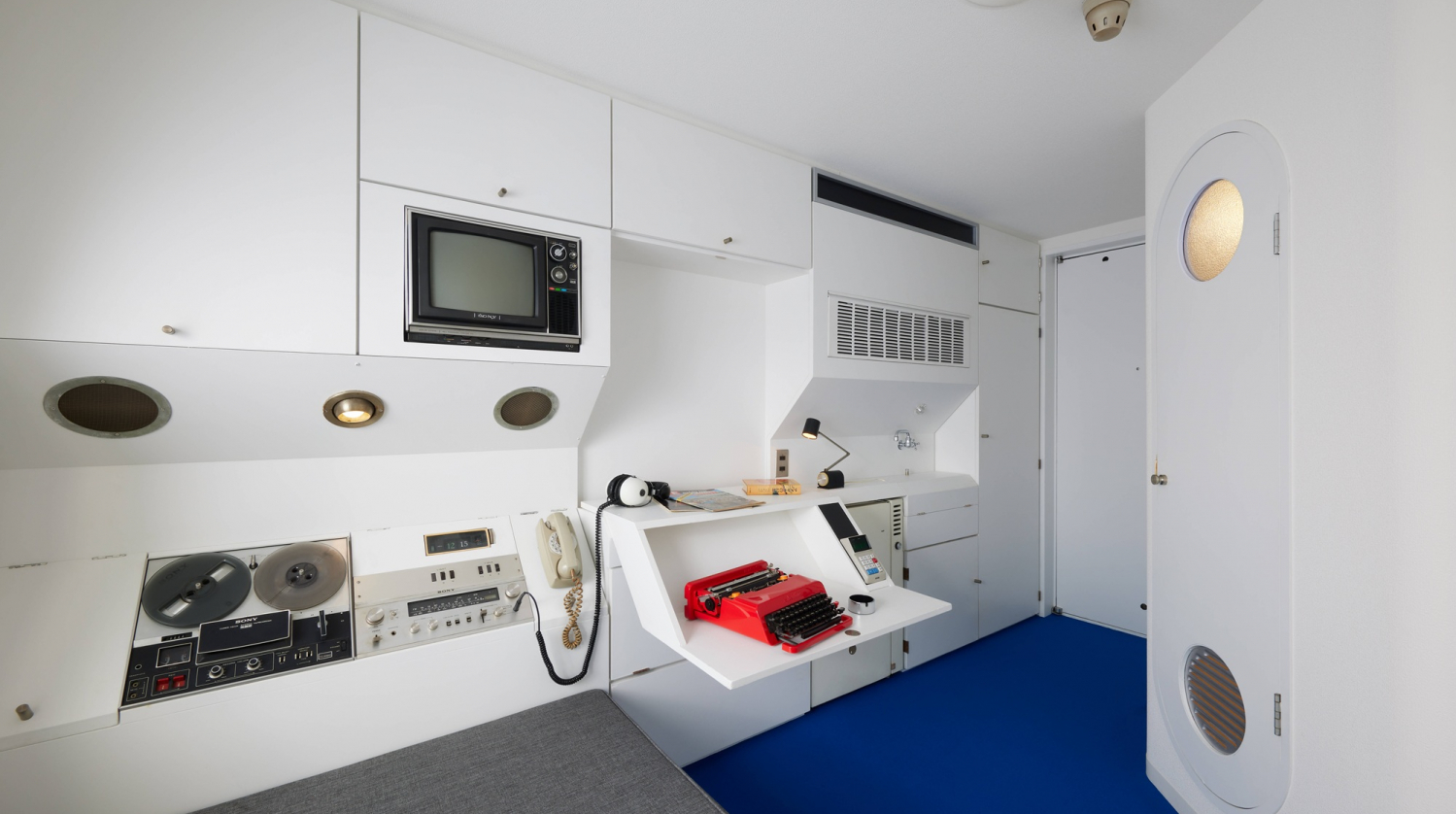 Kisho Kurokawa, Architect & Associates (Tokyo, est. 1962). Capsule A1305 from the Nakagin Capsule Tower. 1970–72; restored 2022–23. Steel, wood, paint, plastics, cloth, polyurethane, glass, ceramic, and electronics, 8′ 4 3/8″ × 8′ 10 5/16″ × 13′ 10 9/16″ (255 × 270 ×423 cm).The Museum of Modern Art, New York. Gift of Jo Carole and Ronald S. Lauder, Alice and Tom Tisch, and the Nakagin Capsule Tower Preservation and Restoration Project, Tokyo Noritaka Minami. B1004 I, from the series 1972 (2010–22). 2011. Archival pigment print, 20 × 25″ (101.6 × 127 cm) © Noritaka Minami Images from Nakagin Capsule Style (Tokyo: Soshisha, 2020), showing Wakana Nitta (aka Cosplay Koe-chan) in her capsule, which she uses as a DJ-booth. Courtesy Tatsuyuki Maeda / The Nakagin Capsule Tower Preservation and Restoration Project, Tokyo, Japan Noritaka Minami. A503 I, from the series 1972 (2010–22). 2017. Archival pigment print, 20 × 25″ (101.6 × 127 cm) © Noritaka Minami
Kisho Kurokawa, Architect & Associates (Tokyo, est. 1962). Capsule A1305 from the Nakagin Capsule Tower. 1970–72; restored 2022–23. Steel, wood, paint, plastics, cloth, polyurethane, glass, ceramic, and electronics, 8′ 4 3/8″ × 8′ 10 5/16″ × 13′ 10 9/16″ (255 × 270 ×423 cm).The Museum of Modern Art, New York. Gift of Jo Carole and Ronald S. Lauder, Alice and Tom Tisch, and the Nakagin Capsule Tower Preservation and Restoration Project, Tokyo Noritaka Minami. B1004 I, from the series 1972 (2010–22). 2011. Archival pigment print, 20 × 25″ (101.6 × 127 cm) © Noritaka Minami Images from Nakagin Capsule Style (Tokyo: Soshisha, 2020), showing Wakana Nitta (aka Cosplay Koe-chan) in her capsule, which she uses as a DJ-booth. Courtesy Tatsuyuki Maeda / The Nakagin Capsule Tower Preservation and Restoration Project, Tokyo, Japan Noritaka Minami. A503 I, from the series 1972 (2010–22). 2017. Archival pigment print, 20 × 25″ (101.6 × 127 cm) © Noritaka Minami
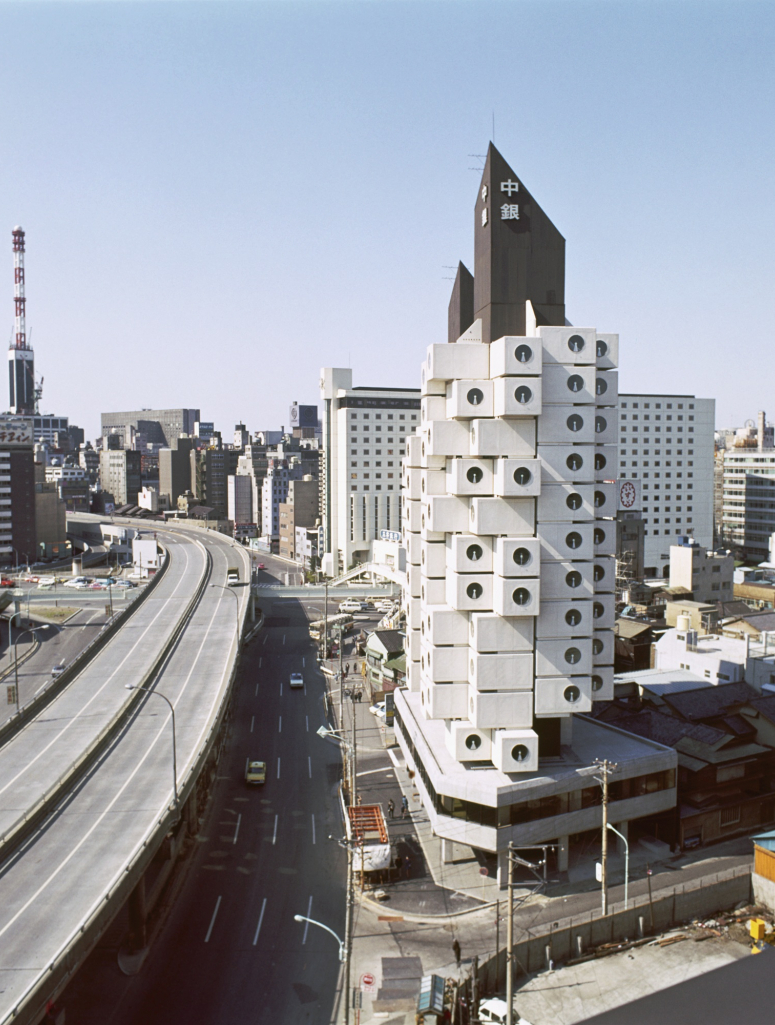 Kisho Kurokawa, Architect & Associates (Tokyo, est. 1962). Nakagin Capsule Tower, Tokyo. 1970–72. Exterior view. 1972. Photograph: Tomio Ohashi
Kisho Kurokawa, Architect & Associates (Tokyo, est. 1962). Nakagin Capsule Tower, Tokyo. 1970–72. Exterior view. 1972. Photograph: Tomio Ohashi
History & Concept
Built in Tokyo’s Ginza district between 1970 and 1972, the Nakagin Capsule Tower was a landmark embodiment of the Metabolism movement. It comprised 140 prefabricated capsules affixed to concrete cores—each designed as a small, self‑contained living or office unit . Kurokawa envisioned a modular urban structure whose capsules could be replaced every 25 years—an ambition never realized and one that ultimately shaped the building’s fat
Demolition & Rescue
Though intended to evolve, decades of deferred maintenance, structural issues, and asbestos concerns led to the tower’s dismantling in 2022 . Yet, not all was lost: preservationists rescued 23 capsules, of which 14 were meticulously restored—one of which is now the centerpiece of the MoMA exhibition
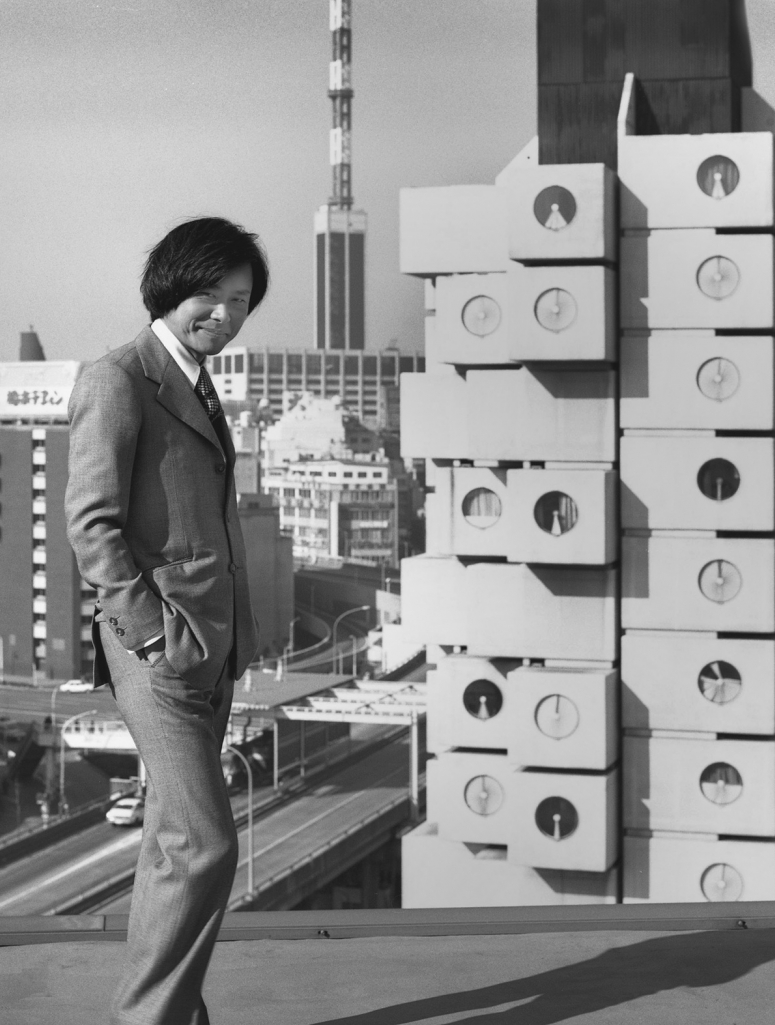 Kishō Kurokawa in front of the completed Nakagin Capsule Tower, 1974. Photo: Tomio Ohashi
Kishō Kurokawa in front of the completed Nakagin Capsule Tower, 1974. Photo: Tomio Ohashi
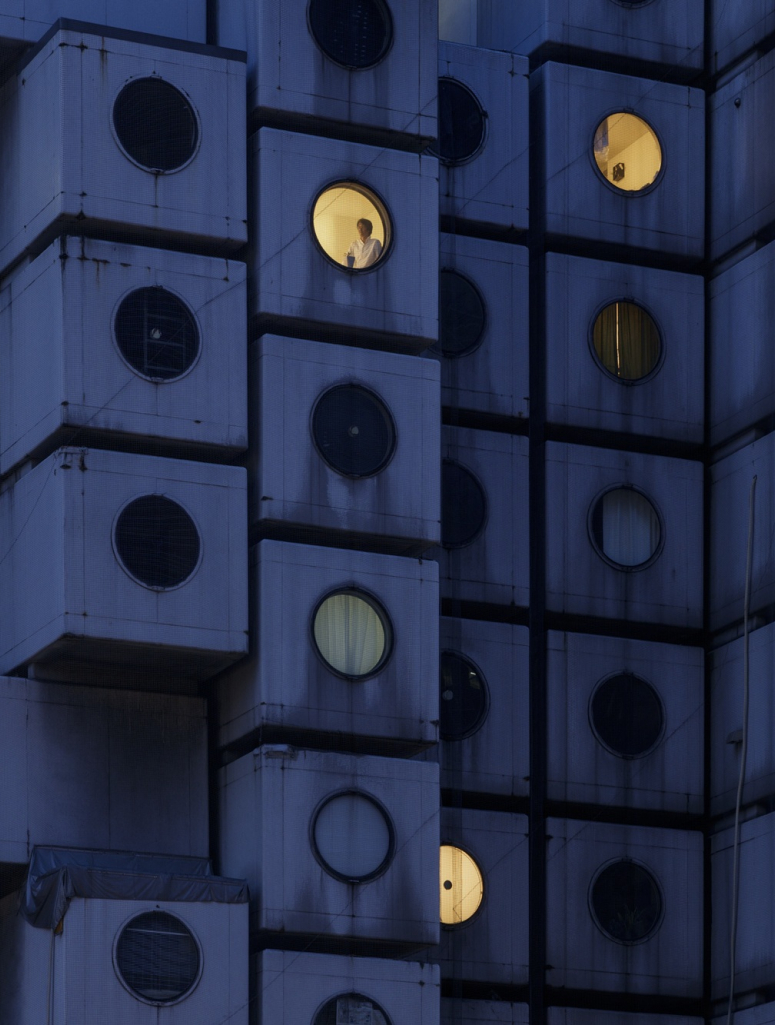 Night time at the Nakagin Capsule Tower, with Mr. Takayuki Sekine seen through the window of capsule B1004, 2016. © Jeremie Souteyrat
Night time at the Nakagin Capsule Tower, with Mr. Takayuki Sekine seen through the window of capsule B1004, 2016. © Jeremie Souteyrat
Exhibition Highlights
Inside the exhibition, visitors encounter a rich tapestry of artifacts: the restored capsule (A1305), original drawings, models, promotional brochures, archival films, and immersive digital experiences—including a virtual tour of the entire building and interviews with former residents. MoMA has cleverly placed the capsule in a street‑facing gallery, allowing passersby to peer into the pod’s compact interior—complete with its original fixtures—while MoMA members will also have opportunities to enter it during special events
Reflection & Relevance
Far from a nostalgic revival, the exhibition invites reflection on the interplay between architectural ideals and lived experience. Although sometimes labeled a utopian failure, the tower’s fifty‑year lifespan in Tokyo—a city where buildings average just 15 to 20 years—underscores its remarkable endurance and influence. The exhibition honors Kurokawa’s bold vision of future-ready, adaptable architecture while inviting viewers to consider how design, community, and imagination converge in shaping the built environment. More information on this ongoing exhibition can be found here: https://press.moma.org/exhibition/nakagin-capsule-tower/
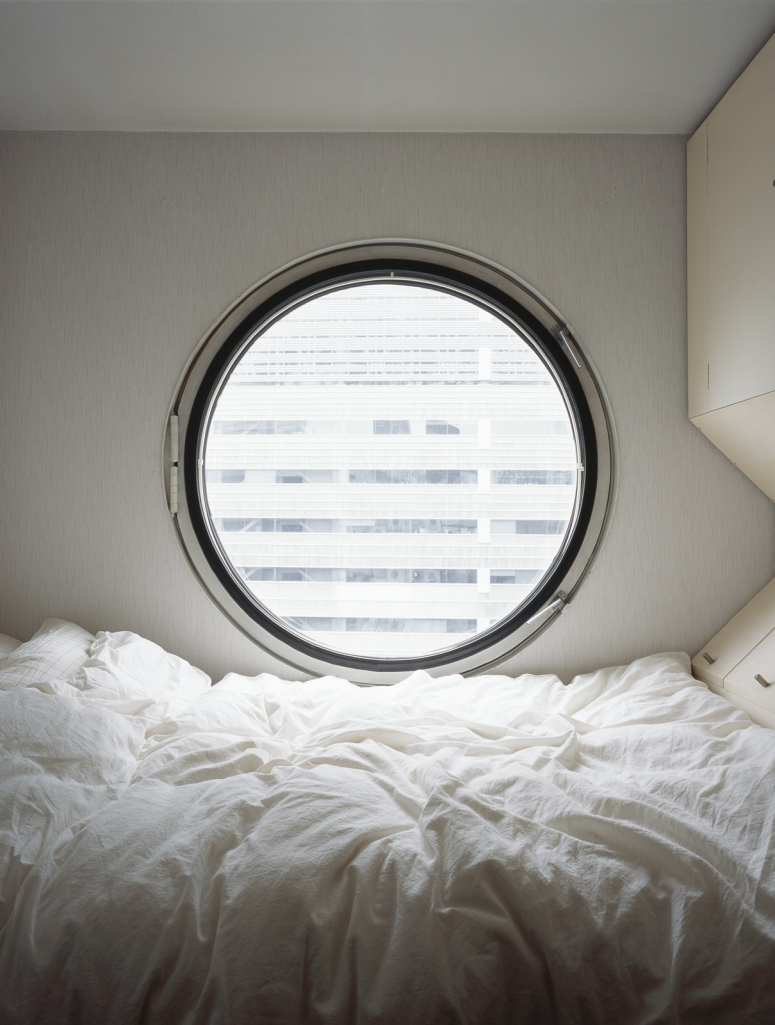 Noritaka Minami. B1004 I, from the series 1972 (2010–22). 2011. Archival pigment print, 20 × 25″ (101.6 × 127 cm) © Noritaka Minami
Noritaka Minami. B1004 I, from the series 1972 (2010–22). 2011. Archival pigment print, 20 × 25″ (101.6 × 127 cm) © Noritaka Minami

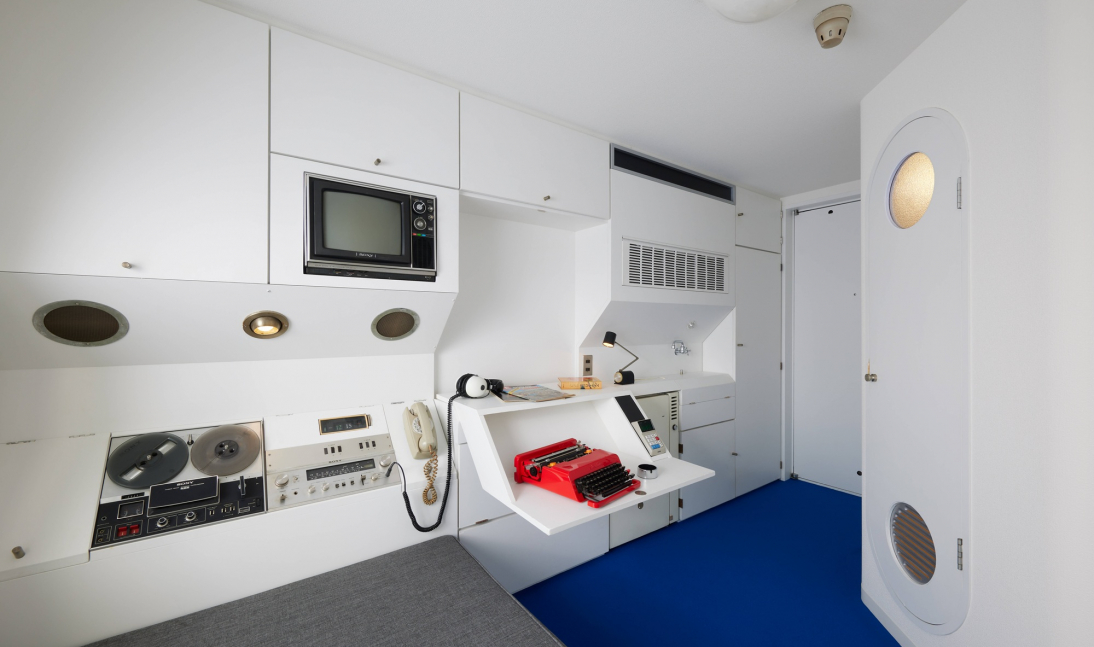

 Only / Once voucher
Only / Once voucher
 Elac PR 80 radio
Elac PR 80 radio
 Captain radio
Captain radio
 Lifestyle, Products
Lifestyle, Products
 History
History
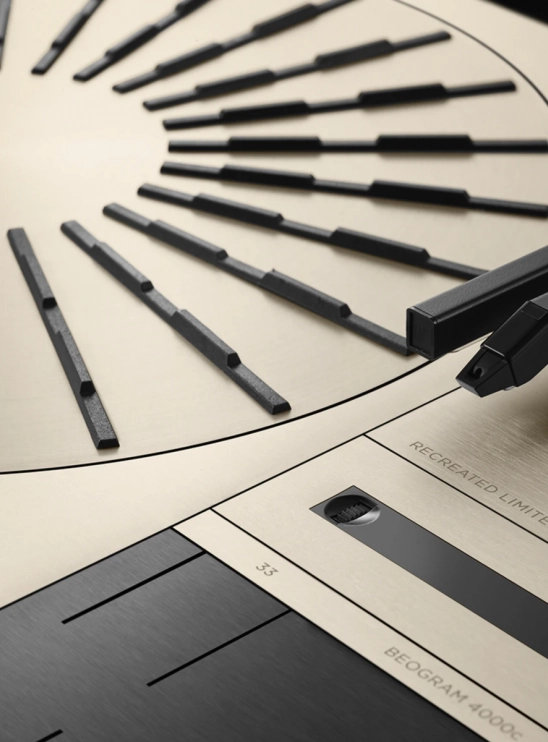 Products, Design
Products, Design
